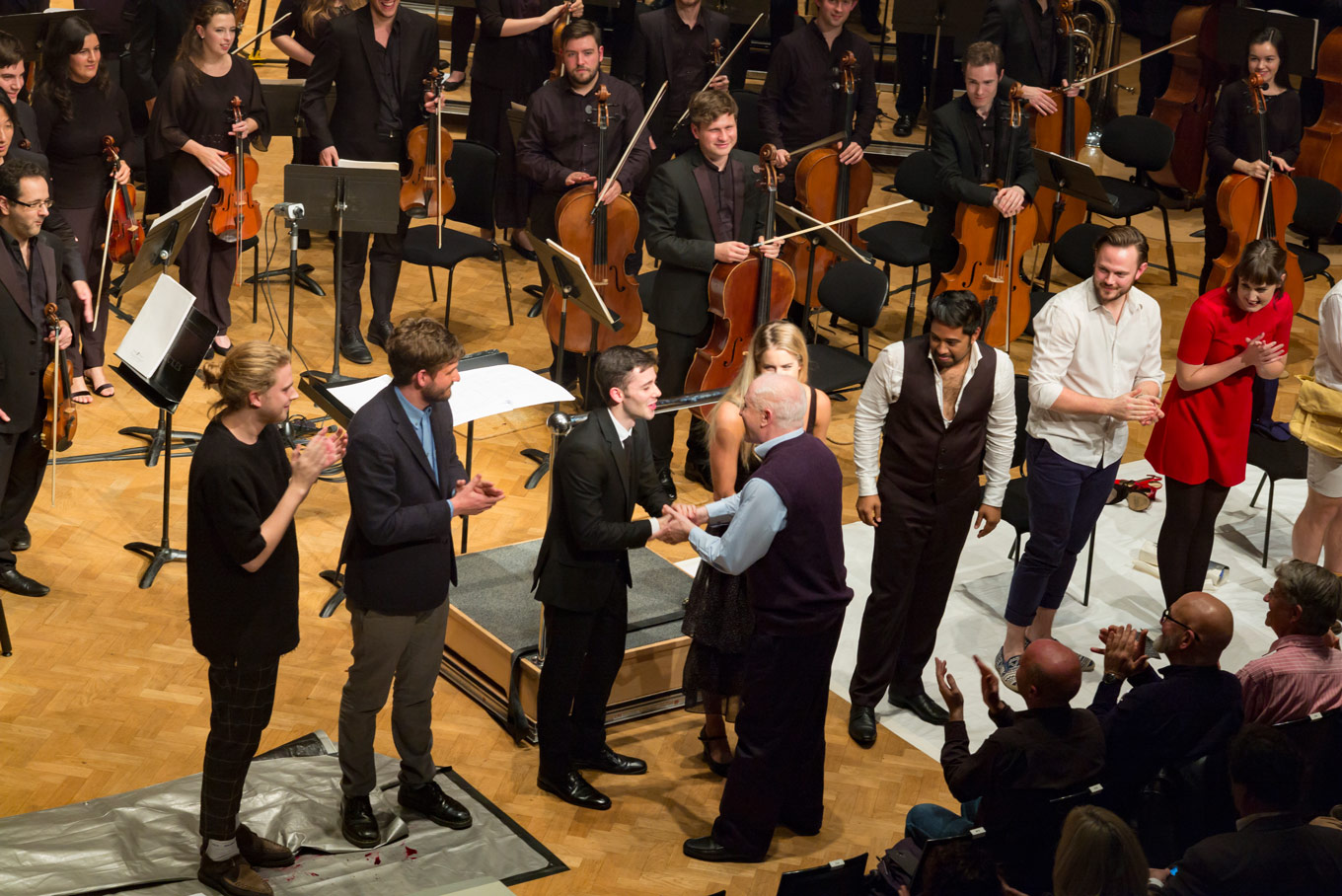
Fuelled by female oppression: Written on Skin
ReviewIf sex is about power then George Benjamin’s opera Written on Skin sharpens it into a vicious weapon. Originally commissioned for the 2012 Aix-en-Provence Festival, the work has since been critically praised and performed internationally, including at Covent Garden. On the 20th it was presented by the Melos Sinfonia at LSO St. Lukes with the soloists Lauren Fagan, Patrick Terry, Ross Ramgobin, Bethan Longford and Nick Pritchard. Founded seven years ago by Artistic Director Oliver Zeffman, who conducted on Friday night, the Melos Sinfonia has been especially committed to promoting cultural dialogue between Britain and Russia, frequently touring the country as well as bringing Russian composers to British audiences.
Written on Skin is based on the legend of the 12th-century troubadour Guillem de Cabestany. Apparently conducting an affair with the wife of Raimon of Castell Rosselló, he was murdered by the jealous husband who in a sadistic twist then served Guillem’s heart to his wife, who threw herself out of a window in despair. Rather than a musician however the opera focusses on an illuminator, The Boy. He is commissioned by The Protector, a powerful magnate, to create a manuscript celebrating him and his family. Though The Protector’s wife Agnès is initially wary of The Boy, they soon begin an affair. He seduces Agnès by painting her. The Protector suspects their illicit relationship and eventually The Boy writes a page describing everything. In retaliation The Protector slits his throat and then serves Agnès his heart as a dish, gleefully revealing that it was her lover’s. She is defiant, but when her husband approaches with a knife she flings herself out of the window.

Female oppression fuels the narrative of Written on Skin. Agnès is described in the prologue as being an object of The Protector, with no prerogative in her life, despite the irony of her character being named while her husband is referred to only by his title. At first she resists the instalment of The Boy in her house, but is overruled by her husband. Her affair therefore is as much an act of rebellion as love, her adultery a subversion of her oppressive marriage. When she tries to sleep with her husband he angrily rejects her. By reserving the right to initiate sex he is declaring that he “wears the trousers” in their relationship. Agnès finally urges The Boy to tell The Protector the truth. She uses her sexuality to wreak vengeance on her domineering husband, wielding it as a knife to stab him in the back.
The music develops in parallel to the narrative, twisting and turning in response to the events portrayed. From the subtle, gliding arcs of the strings during the seduction to the terrifying crescendos accompanying The Boy’s murder, the score varies immensely. Benjamin is especially gifted at disseminating horror, the overwhelming psychological intensity of the opera’s key moments becoming almost unbearable. Under Zeffman’s guidance the Melos Sinfonia infused the music with a dramatic potency, perhaps too much at times. The soloists were all excellent, each committed to their roles both theatrically and musically. Lauren Fagan as Agnès was particularly magnificent, embodying the character’s melancholy as well as fiery determination.

Written on Skin might not please all audiences but its emotive power is beyond question. At times the raw darkness which saturates it makes it intensely disturbing. But it’s this headiness which makes it so successful. This is an opera which is going to stick around for a while yet.


Comments